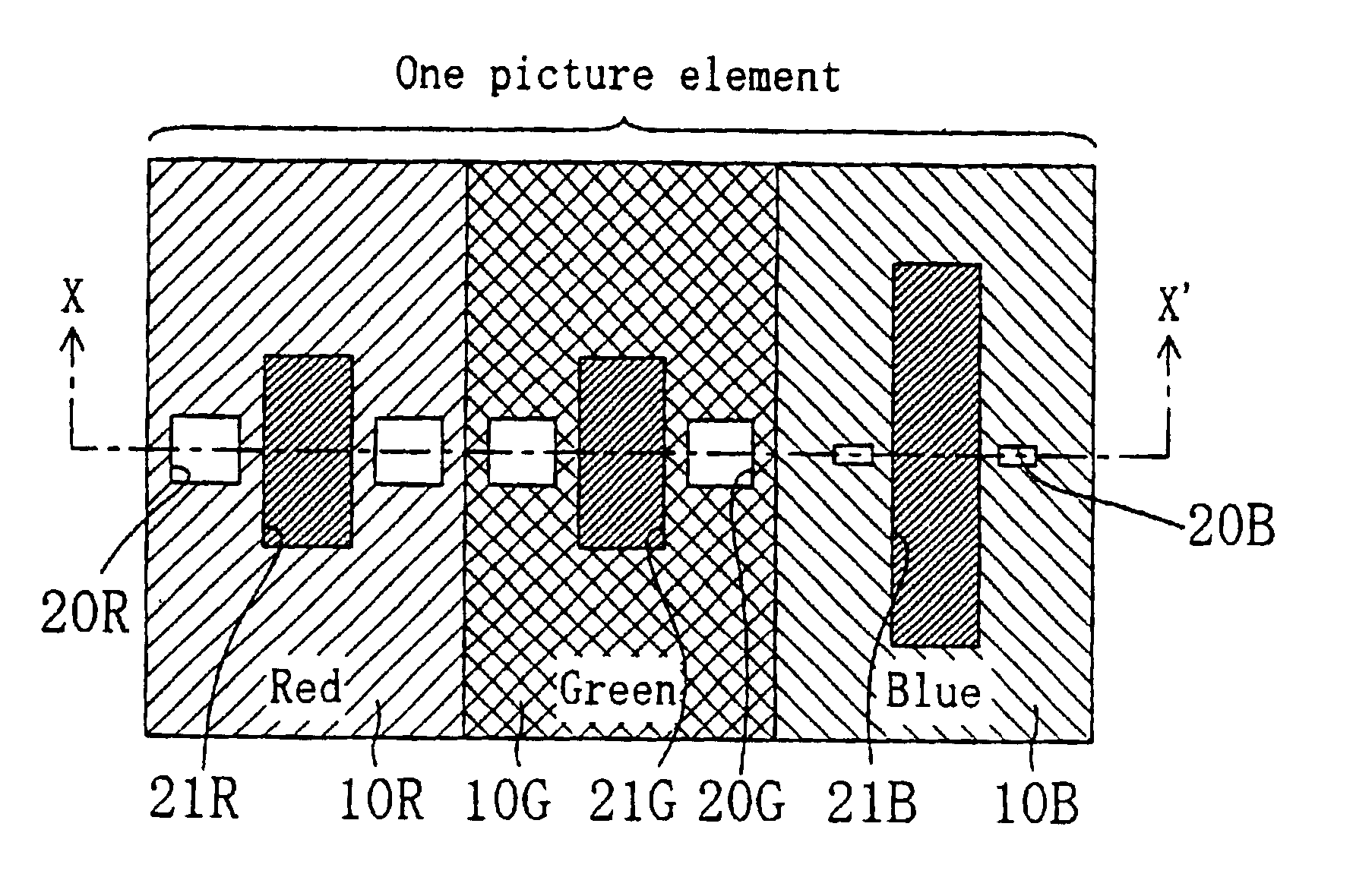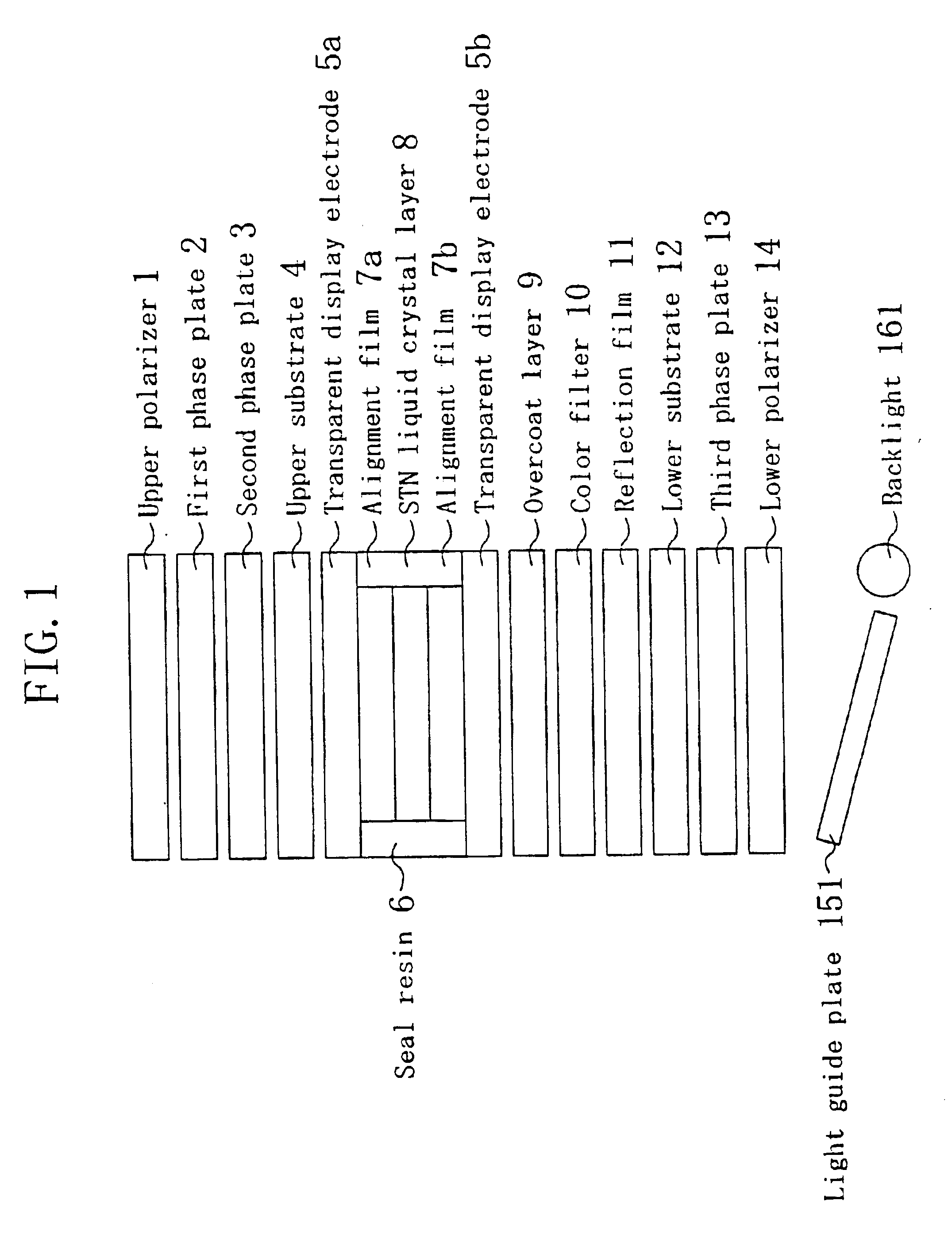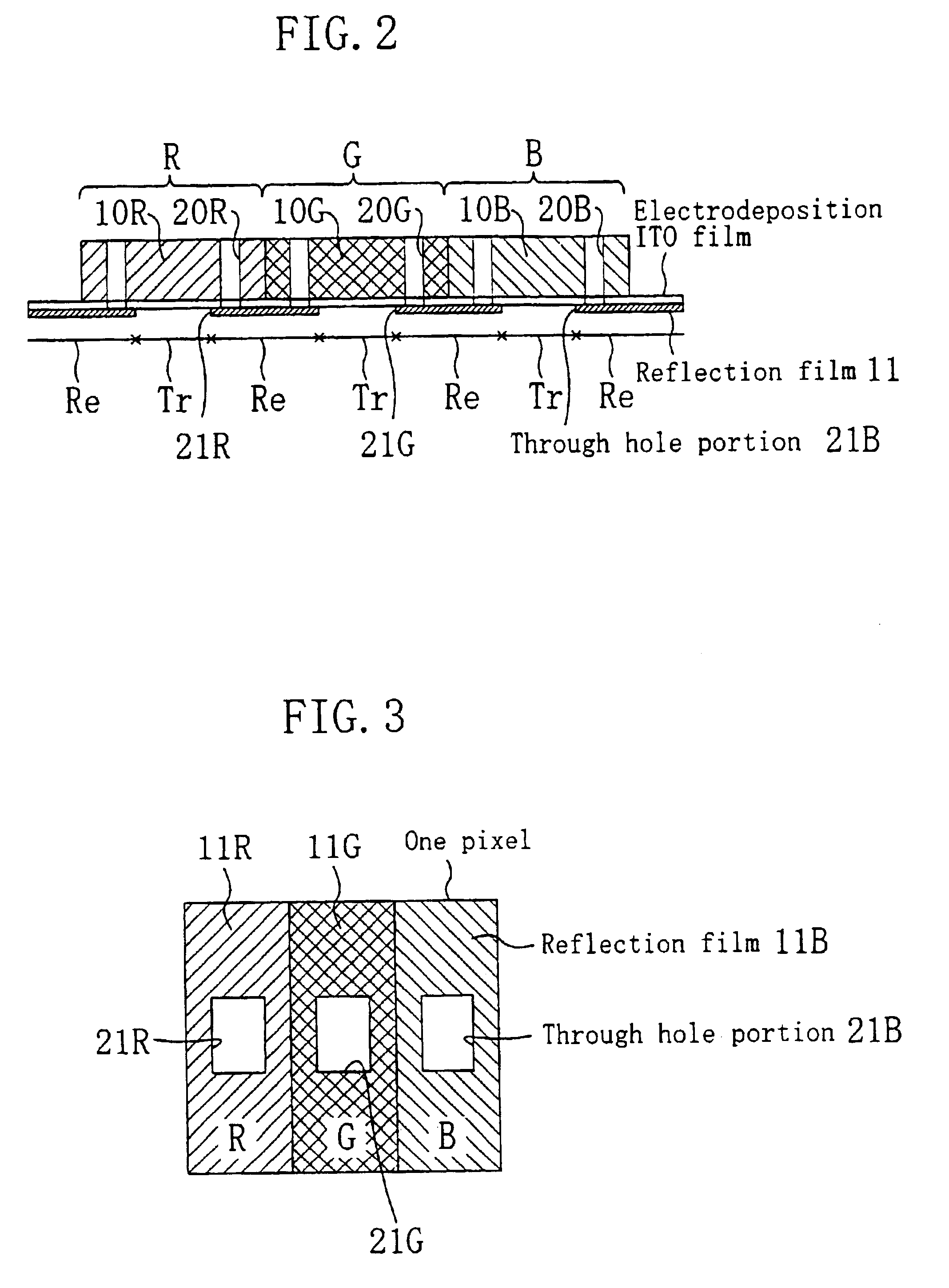Transmission/reflection type color liquid crystal display device
a liquid crystal display device and reflection display technology, applied in non-linear optics, instruments, optics, etc., can solve the problems of significant reduction in color purity, significant reduction in brightness in reflection display mode, and inability to achieve color reproducibility
- Summary
- Abstract
- Description
- Claims
- Application Information
AI Technical Summary
Benefits of technology
Problems solved by technology
Method used
Image
Examples
embodiment 1
[0059]FIG. 1 is a diagram schematically illustrating a transflective color liquid crystal display device of the present embodiment. The transflective color liquid crystal display device of the present embodiment includes an upper polarizer 1, a first phase plate 2, a second phase plate 3, an upper substrate 4, a transparent display electrode 5a, an alignment film 7a, an STN liquid crystal layer 8, an alignment film 7b, a transparent display electrode 5b, an overcoat layer 9, a color filter 10, a reflection film 11, a lower substrate 12, a third phase plate 13, a lower polarizer 14, a light guide plate 151 and a backlight 161. These components are layered in this order from the viewer side (the upper side in FIG. 1). The upper substrate4 and the lower substrate 12 are attached to each other via a seal resin 6 therebetween, thereby forming the STN liquid crystal layer 8.
[0060]The liquid crystal display device of the present embodiment includes a plurality of pixel regions arranged in ...
embodiment 2
[0099]FIG. 13 is a plan view schematically illustrating one pixel of the liquid crystal display device of Embodiment 2, and FIG. 14 is a cross-sectional view illustrating the same taken along line x-x′. In the present embodiment, three pixels of different hues (R, G and B) together form a picture element. The R, G and B color filters 10R, 10G and 10B include a number of respective openings 20R, 20G and 20B within a pixel region. In the present embodiment, the color filters 10R, 10G and 10B include two rectangular openings 20R, 20G and 20B, respectively, in each pixel region.
[0100]In the present embodiment, the color filter 10B in a blue pixel region has openings the size (area) of which is smaller than those of the color filters 10R and 10G in red and green pixel regions. Therefore, the blue color filter 10B, among the R, G and B color filters 10R, 10G and 10B, has the largest color filter area for coloring the reflected light from the reflection film 11.
[0101]Moreover, in the prese...
embodiment 3
[0114]FIG. 16 is a plan view schematically illustrating one picture element in a transflective color liquid crystal display device of Embodiment 3. The color liquid crystal display device of the present embodiment is different from that of Embodiment 2 in that the openings 21R, 21G and 21B of the reflection film 11 in the R, G and B pixel regions have an equal size (area) among the R, G and B pixels.
[0115]In the color liquid crystal display device of the present embodiment, the size (area) of the opening 20B of the color filter 10B in the blue pixel region is smaller than those of the openings 20R and 20G of the color filters 10R and 10G in the red and green pixel regions. Therefore, the blue color filter 10B, among the R, G and B color filters 10R, 10G and 10B, has the largest color filter area for coloring the reflected light from the reflection film 11.
[0116]With the color liquid crystal display device of the present embodiment, if the upper plastic substrate 4 gets yellowish thr...
PUM
| Property | Measurement | Unit |
|---|---|---|
| transmittance | aaaaa | aaaaa |
| transmittance | aaaaa | aaaaa |
| reflectance | aaaaa | aaaaa |
Abstract
Description
Claims
Application Information
 Login to View More
Login to View More - R&D
- Intellectual Property
- Life Sciences
- Materials
- Tech Scout
- Unparalleled Data Quality
- Higher Quality Content
- 60% Fewer Hallucinations
Browse by: Latest US Patents, China's latest patents, Technical Efficacy Thesaurus, Application Domain, Technology Topic, Popular Technical Reports.
© 2025 PatSnap. All rights reserved.Legal|Privacy policy|Modern Slavery Act Transparency Statement|Sitemap|About US| Contact US: help@patsnap.com



